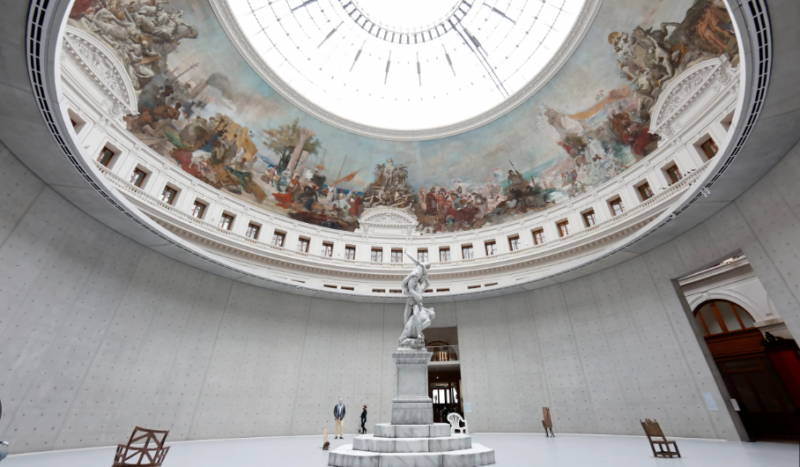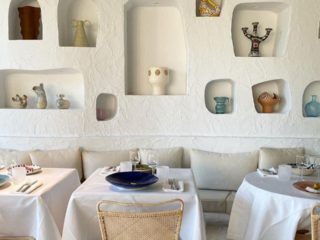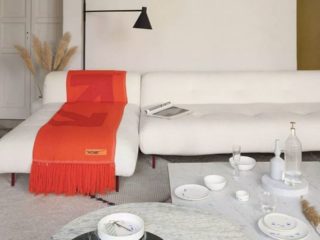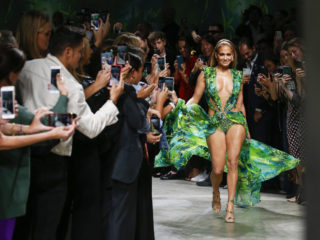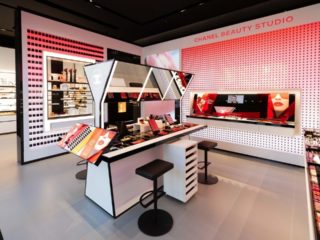In early year of the 2000, the Guggenheim Museum surprised the art world with its Giorgio Armani retrospective. It wasn’t just the sight of the runway that caused a stir—it was the rumour that Armani’s $15 million donation had effectively purchased his place in art history. At the time, it felt like fashion had boldly stepped into the elite world of fine art—uninvited and unapologetic.
But two decades later, luxury brands are now creating cultural institutions of their own. From the Fondation Louis Vuitton in Paris to the Fondazione Prada in Milan and the Bourse de Commerce.
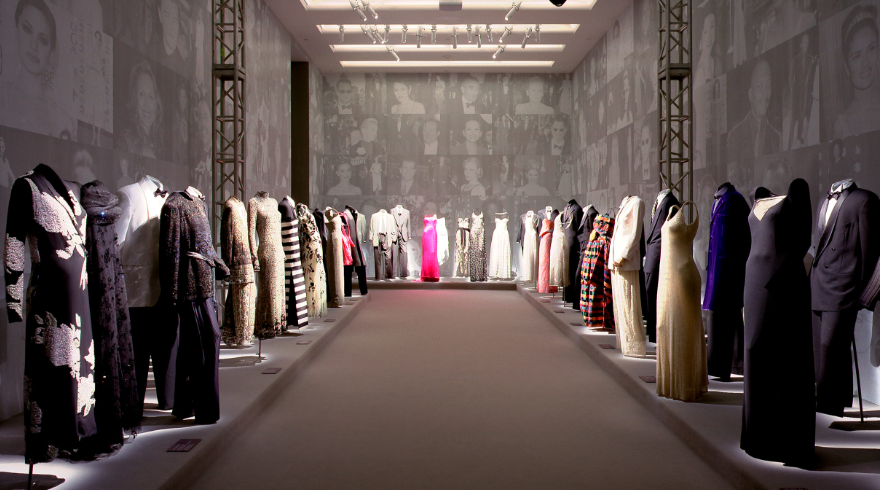
What once seemed like a provocative intrusion has evolved into a seamless fusion. Fashion leans on the gravitas of art to deepen its cultural resonance, where the worlds of commerce and creativity quietly intertwine. Andy Warhol’s once-playful prediction feels uncannily prescient today: “All department stores will become museums, and all museums will become department stores.
Department Stores as Cultural Curators
This fusion of commerce and culture is also reshaping department stores, which are shifting from product-first spaces to experience-led environments. The most forward-thinking department stores are reinventing themselves as cultural destinations—places where people come not just to shop, but to be inspired.
Incorporating art into these multi-brand settings offers a unifying thread—an overarching atmosphere that brings disparate labels together under a shared, elevated sensibility. Art becomes the connective tissue that allows these spaces to transcend commerce, creating an experience that feels curated, cohesive, and culturally relevant.
Department stores are also tapping into community dynamics. By hosting exhibitions or collaborating with local artists, they can expand their reach beyond typical retail audiences. These initiatives invite a more diverse crowd into the space—shoppers, tourists, art lovers, creatives—and transform the store into a living part of the city’s cultural dialogue. This not only enhances the store’s cultural credibility but builds loyalty and goodwill among its surrounding communities.
The Art of Discovery and Differentiation
One of the most powerful effects of integrating art into retail is its ability to invite discovery. When a shopper enters a space not simply to buy, but to explore, they become more open to surprise. Art draws them in, invites them to move slowly, to look closely. This atmosphere of curiosity increases dwell time and encourages broader engagement with the space and its offerings.
For department stores and luxury retailers alike, this kind of engagement is more valuable than foot traffic alone—it creates opportunities for deeper, more memorable interactions between customers and brands. Visitors who came for the art may leave with a new appreciation for a designer they hadn’t previously considered.
This strategy of integrating art into retail environments is not entirely new. In fact, Sears, the American department store giant, pioneered an unexpected version of it in 1962 with the launch of the Vincent Price Collection—a bold initiative that brought original works by artists like Picasso, Rembrandt, and Salvador Dalí into its stores, making fine art accessible to everyday shoppers. Though surprising for a mass-market retailer, Sears’ program anticipated the now-common practice of blending commerce with culture to engage consumers on a deeper level.
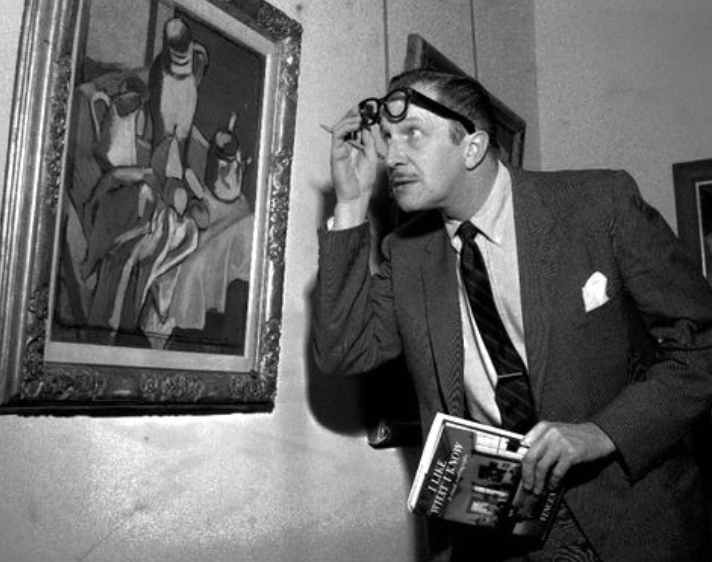
Le Bon Marché, in fact, set a historical precedent as early as 1875, when it became the place to be in Paris by opening an in-store art gallery that showcased works rejected by the official Salons. What was once a novelty has now evolved into a norm: increasingly, department stores and luxury retailers are embracing permanent collections curated by seasoned art professionals, transforming their spaces into legitimate cultural destinations.
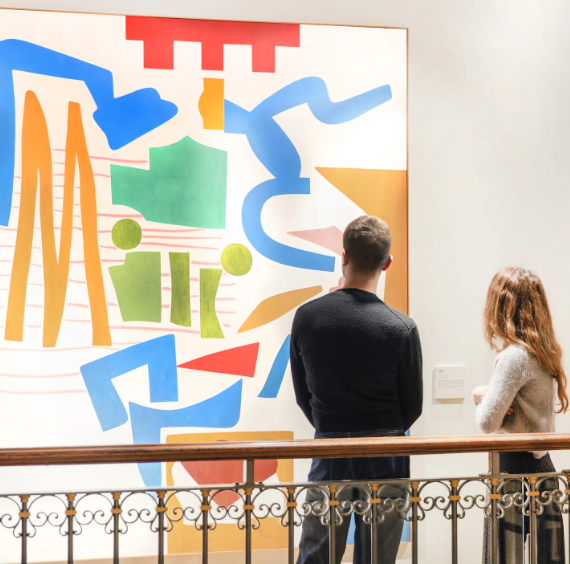
Today, this strategy has emerged as a compelling point of distinction in an increasingly crowded and competitive market. Landmark stores such as Bergdorf Goodman have shown how thoughtfully curated art installations and exhibitions can generate excitement, attract media attention, and foster genuine cultural engagement. One example is their collaboration with the Spaceless Gallery, which featured an exhibit of paintings, sculptures, ceramics, and photography. These initiatives go beyond visual appeal—they shape brand identity, establish an emotional tone, and craft narratives that resonate with today’s experience-driven consumers.
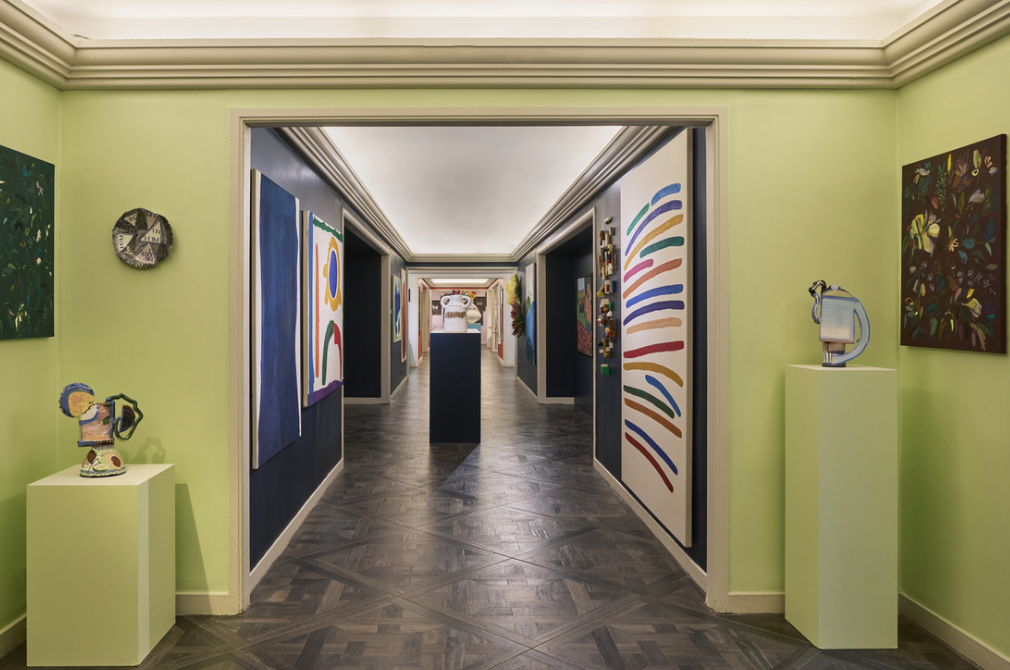
Emotional Engagement and the Power of Art
In a climate where consumers are seeking experiences over transactions, the presence of art within flagship spaces transforms shopping into something immersive, reflective, and memorable.
By integrating art into their physical environments, brands foster deeper emotional resonance with their audiences. Visitors are invited not only to shop but to explore, absorb, and connect. These artistic interventions—whether in the form of bold installations, curated exhibitions, or artist collaborations—encourage people to linger, to engage, and ultimately, to feel something beyond consumer desire. Art doesn’t just beautify the space—it gives it meaning, reinforcing the brand’s position not only as a purveyor of fashion, but as a cultural patron. This alignment with creative communities enhances not just the customer experience, but the brand’s identity, positioning it as a thoughtful contributor to the wider cultural landscape.
Storytelling Through Curation
When art is carefully curated to reflect a brand’s core values and creative vision, it becomes a powerful form of storytelling. The relationship between a brand’s aesthetic and the art it displays creates a subtle but deeply effective dialogue. Minimalist brands might showcase sleek, conceptual works. Heritage-driven labels may opt for craftsmanship and tradition. Bold, eclectic names lean into contemporary provocations. Whatever the direction, this cohesion ensures that every artistic choice feeds back into a larger narrative—one that customers can intuitively feel and connect with.
Unlike overt marketing or slogans, art invites interpretation and imagination. It allows brands to express themselves with nuance and authenticity. A well-curated exhibition in a flagship space doesn’t just sell clothes—it tells a story about who the brand is, what it values, and the kind of emotional world it wants to invite consumers into.
Fashion’s Future is Cultural
The influence of art is no longer limited to private galleries or luxury museums—it’s reshaping the very foundations of retail. Department stores, once seen purely as commercial hubs, are increasingly adopting the role of cultural institutions. From curated exhibitions to permanent collections, these multi-brand spaces are leveraging art to enhance their environments, deepen customer engagement, and reframe shopping as an experiential journey. The result is a hybrid space where commerce meets curation—where browsing becomes a form of cultural participation.
This shift is not isolated. Across the globe, a growing number of department stores—from Le Bon Marché in Paris to Selfridges in London—are integrating contemporary art into their interiors, transforming traditional retail into immersive, art-forward environments. These spaces are no longer just about selling products; they are about crafting atmospheres that reflect taste, sophistication, and cultural capital.
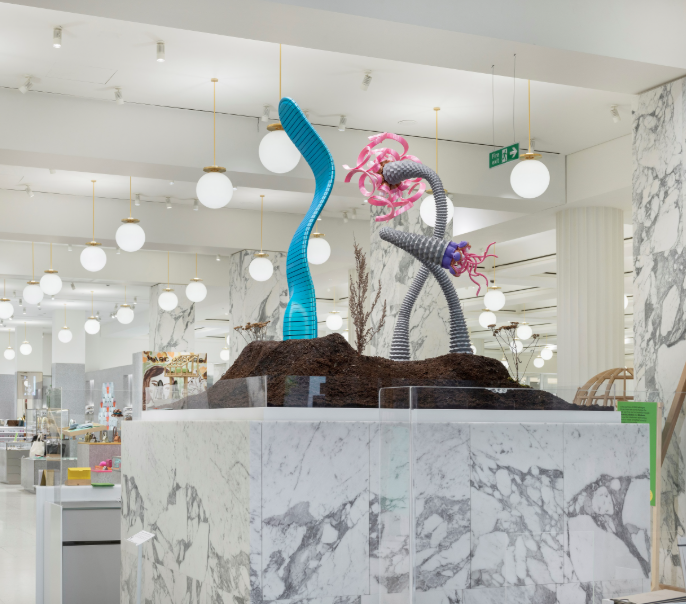
Flagship stores, meanwhile, are taking this evolution even further. As singular expressions of a brand’s identity, these spaces offer unparalleled opportunities for artistic integration. Whether through architectural design, commissioned works, or curated exhibitions, brands are using flagships to position themselves at the intersection of fashion and culture. In doing so, they not only elevate their visual storytelling but also align themselves with the values and interests of a culturally engaged, often ultra-wealthy clientele.
In this new landscape, art is more than a backdrop—it’s a strategic asset. For both department stores and individual brands, the embrace of art reflects a broader transformation: retail as cultural experience, and the store as a site of lasting emotional and aesthetic connection.

